Distribution Characteristics of Polycyclic Aromatic Hydrocarbons in Typical Shallow Pore Water and Karst Water
-
摘要: 近几年多环芳烃(PAHs)在地下水中的检出报道逐渐增多,但关于我国主要水文地质单元地下水中PAHs的研究匮乏。为研究不同水文地质条件地下水中PAHs分布特征,本文在华北平原、珠江三角洲平原及西南岩溶区采集浅层孔隙地下水和岩溶地下水样品共82组,使用气相色谱-质谱仪进行测试,采取统计学方法对比分析各区PAHs的检出率、浓度和组成。结果表明:检测的16种PAHs,每种PAH至少在一个样品中被检出,检出率最高的是(䓛)(6.10%),检出浓度最大的是萘(5.41 μg/L),仅苯并(a)芘超过《地下水水质标准》Ⅲ类水限值,超标率为2.44%。地下水中PAHs以2~4环为主,但三个研究区存在差异,北方孔隙水4环PAHs的相对比例(52.48%)较高;南方孔隙水与西南岩溶水分别是3环(56.60%)、2环(95.66%)PAHs占优。北方孔隙水PAHs主要是燃烧源,南方孔隙水PAHs来源与珠江三角洲产业布局相关,西南岩溶水PAHs则主要受大气降水影响。PAHs在各区检出差异与其理化性质、区域水文地质条件、污染源和气象水文等因素有关。研究结果可为我国地下水PAHs污染监测和地下水相关标准制定提供基础支撑。要点
(1) 地下水中检出率最高的PAHs是,检出率为6.1%。
(2) 调查区地下水中的PAHs主要以2~4环为主。
(3) 石家庄PAHs主要为燃烧源;广州地区与产业布局相关;曲靖地区则主要受大气降水影响。
HIGHLIGHTS(1) The highest detection frequency of PAHs was chrysene (6.10%) in groundwater.
(2) In this study, PAHs in groundwater are mainly 2-4 rings.
(3) The source pollution of PAHs was from combustion in Shijiazhuang; and it was related to industrial layout in Guangzhou; while it was mainly affected by precipitation in Qujing.
Abstract:BACKGROUNDIn recent years, reports of the detection of PAHs in groundwater have gradually increased, but research on PAHs in groundwater of major hydrogeological units in China is not being conducted.OBJECTIVESTo study and compare the distribution characteristics of PAHs in groundwater under different hydrogeological conditions, using a total of 82 samples of shallow pore water and Karst groundwater samples collected in the Huabei plain, the Pearl River Delta plain, and the Southwestern Karst area.METHODSGas Chromatography-Mass Spectrometry (GC-MS) was used to test PAHs in groundwater samples, and statistical methods were used to compare the detection frequency, concentration and composition of PAHs in the three different areas.RESULTS16 PAHs were detected and each PAH was detected in at least one sample. The highest detection rate of PAHs was chrysene (6.10%). The PAH with the highest concentration was naphthalene (5.41 μg/L). Only the concentration of benzo(a)pyrene exceeded the Class Ⅲ limit in the standard for groundwater quality, and the over-standard rate was 2.44%. The PAHs in groundwater are mainly 2-4 rings, but the composition of PAHs in the three regions was different. The relative proportion of 4-rings PAHs in the northern pore water was high, accounting for 52.48%, whereas the pore water in the South and the Karst water in the Southwest were dominated by 3-rings (56.60%) and 2-rings (95.66%), respectively.CONCLUSIONSThe main cause of contamination of PAHs in Northern pore water was by combustion. The PAHs contamination in the Southern pore water was related to the industrial layout of the Pearl River Delta, whereas the PAHs of Qujing Karst water were mainly affected by atmospheric precipitation. The detection differences of PAHs in different districts were related to their physicochemical properties, hydrogeological conditions, pollution sources, meteorological and hydrological factors. The results provide basic data support for groundwater PAHs pollution monitoring and the formulation of a groundwater related standard in China.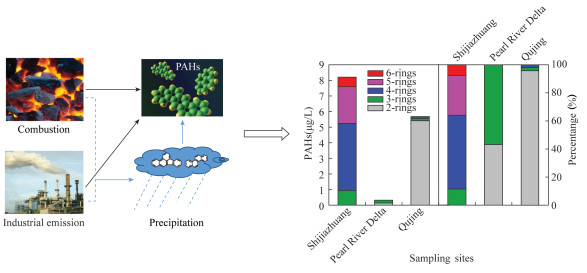
-
多环芳烃(PAHs)是世界上最早认识的一类化学致癌物,由于其具有“三致”作用受到广泛关注[1-2]。美国环保署(USEPA)列出的优先控制污染物名单中包括16种PAHs[3],而我国国家环保部公布的优先控制污染物中,包括其中的7种[4]。PAHs有天然来源和人为来源,天然森林火灾或者火山爆发引起的含量甚微,随着经济的发展,人类活动是PAHs进入环境的主要原因[5],如各种工业活动、交通尾气排放以及产生的各种废物等[6-7]。在我国,土壤中PAHs的研究最为普遍[8-13]。有学者分析了我国1999—2008年20个省市的表层土壤中PAHs的分布特征,发现我国表层土壤中∑PAHs平均含量的区域分布趋势为东北 > 华北 > 华东 > 华南 > 华中[4]。PAHs可经废水排放、地表水补给、地表径流和渗滤、大气沉降和诸如石油泄漏等多种途径进入地下水环境中[14],这些途径都要经过包气带,经长期积累,地下水也必会受到PAHs的污染。
地下水是我国重要的供水水源,近几年也已有报道检出PAHs[15-16]。昌盛等[17]对石家庄滹沱河冲洪积扇地区51组地下水样品分析发现∑PAHs浓度范围为ND~333.4 ng/L,平均值为58.0 ng/L,且以苯并(a)芘为参照发现了扇顶致癌风险较高。龚香宜等[18]对江汉平原四湖流域浅层地下水中PAHs的分布及来源进行研究,发现枯水期总浓度略高于丰水期,但均以低环为主,来源大致归为燃烧源。地下水中PAHs已广泛存在,但很多地区尤其是主要水文地质单元地下水还未曾开展深入研究,一方面大多是关于地下水有机污染特征初步研究,只发现有某种PAH检出但未对其进行专题研究;另一方面是针对某一地区的地下水进行研究,鲜有覆盖我国多区域多类型地下水中分布情况的对比研究。因此,本文选取华北平原的石家庄滹沱河冲洪积扇地区、珠江三角洲平原的广州、佛山、东莞地区及西南岩溶区的云南曲靖为典型区,以USEPA公布的16种PAHs为目标污染物,结合污染物自身性质及当地水文地质条件,通过对82组地下水样品PAHs的浓度、检出率、检出组成等定量分析,理解地下水中PAHs的污染状况及影响因素,探求多种水文地质条件下的分布特征,以期为地下水污染调查及地下水资源保护提供数据支撑。
1. 研究区概况
本研究选取的三个典型区石家庄滹沱河冲洪积扇平原,珠江三角洲平原的广州、佛山、东莞地区及云南曲靖,水文地质条件差异明显,各区地下水中PAHs的分布特征具有代表性,分别代表了北方埋深较深的孔隙水、南方埋深较浅的孔隙水以及西南地区的岩溶水。
滹沱河冲洪积扇平原位于华北平原西部,本次调查的重点区域是滹沱河沿岸的鹿泉、正定和藁城区,地形西高东低,处于山前的第一个过流区[19],也是南水北调中线工程地下水调蓄、地下水回灌的重点区域[20],该地区有近80%的公共用水来自地下水[17]。珠江三角洲平原位于我国南部边缘地区,主要采样区广州、佛山与东莞是我国工业最发达、环境污染最重的地区,区内主要地下水类型为松散岩类孔隙水[21]。曲靖地处云南东部高原,该区岩溶发育良好,旱、雨季分明,每年的5~10月为降水季节,期间降水量占全年的80%[22]。
研究区的包气带岩性、土地利用类型、调查面积与采样情况见表 1,采样密度符合《区域地下水污染调查评价规范》(DZ/T 0288—2015)的要求。三个地区主要的补给来源均是大气降水,显著差异是包气带厚度和岩性,滹沱河冲洪积扇平原包气带较厚,珠江三角洲平原潜水位埋深极浅,而西南岩溶区造壤能力低、表层土壤缺失,基岩裸露;平原区排泄以径流和人工开采为主,岩溶区独具泉和暗河形式排泄的特点。
表 1 研究区与采样点简要描述Table 1. Brief description of study areas and sampling sites研究区位置 水位埋深(m) 包气带岩性 土地利用类型 调查面积(km2) 采样数(组) 滹沱河冲洪积扇平原 35~40 卵砾石、中粗砂 农业和工业 350 27 珠江三角洲平原 1~5 砂性土 工业 600 28 曲靖岩溶区 - 基岩裸露 农业 270 27 2. 实验部分
2.1 样品采集
2016年在滹沱河冲洪积扇平原顶部沿滹沱河河岸采集地下水样27组,在珠江三角洲采样28组,在云南曲靖岩溶水采样27组。水样是按照中国地质调查局地质调查技术标准(DD2008-1)相关要求进行取样。样品瓶为1 L的干净棕色玻璃瓶,配聚四氟乙烯瓶盖。采集水样时,瓶中保证没有气泡,不加任何保护剂,每个采样点都取2瓶,样品封装完毕后立即放入有冰块的保温箱中,以保证样品在运送过程中一直处于4℃的环境。样品从采样当天算起7 d内完成前处理,前处理后30 d内完成测试。
2.2 水样前处理和测试分析
实验及分析方法依据EPA 8270D制定,样品前处理采用液液萃取法,流程如下:将30 g氯化钠加至1 L分液漏斗中,准确加入1 L水样摇匀,再加入200 ng替代物(硝基苯-D5、2-氟联苯、对三联苯-D14),分别在中性、酸性(经空白检查合格的盐酸溶液调至pH<2)、碱性(经空白检查合格的氢氧化钠溶液调至pH>10)条件下用正己烷各萃取3次,每次萃取加入正己烷30 mL。将萃取液合并后,过无水硫酸钠小柱脱水,蒸发浓缩至小于1 mL,但大于0.5 mL。加入200 ng内标(1, 4-二氯苯-D4、萘-D8、苊-D10、菲-D10、䓛-D12、苝-D12),准确定容至1 mL,转移到2 mL小棕瓶中,冷藏, 待测。
实验室用Agilent 6890N/5975气相色谱-质谱仪(美国Agilent公司)进行水样测试。气相色谱条件:色谱柱型号为HP-5MS毛细管色谱柱(30 m×0.25 mm×0.25 μm,美国Agilent公司),载气为氦气(99.999%),流速1 mL/min。GC升温程序设置为:初始温度60℃,保持5 min,然后以15℃/min的速率升温到255℃,再以5℃/min的速率升温到300℃保持3 min。进样口温度是270℃,进样方式为不分流进样。质谱参数设置如下:离子源为EI源,EI设置为70 eV,离子源温度230℃,四极杆温度150℃,溶剂延迟4 min,信号采集方式为SCAN和SIM同时采集,SIM信号用于定量,SCAN信号用于未知组分的筛查。
本研究共分析样品82组,样品取回后及时分析,每20个样品作为一个批次,每批次至少设有一组实验室空白、实验室空白加标、平行样、样品基质加标,若同批样品数超过20个,则增加一组。实验室空白样品的16种PAHs的浓度均低于检出限,空白加标回收率为70%~139%,基质加标回收率为70%~135%,平行样中的污染物均低于检出限,替代物的相对标准偏差为0.3%~5.1%。
3. 结果与讨论
3.1 调查区地下水中PAHs的检出情况
82组地下水样品中PAHs的检出情况如表 2所示。图 1为地下水中PAHs检出率排序,16种PAHs均有检出,但检出率总体较低,检出率最高的是(6.10%)。USEPA将7种PAHs单体列为人类可能致癌性PAHs[23],包括苯并(a)蒽(BaA)、苯并(a)芘(BaP)、苯并(b)荧蒽(BbF)、苯并(k)荧蒽(BkF)、䓛(Chry)、二苯并(a, h)蒽(DaA)以及茚并(1, 2, 3-cd)芘(InP)。各致癌性PAHs的检出率如图 1所示,这7种可能致癌单体的累计检出率为19.50%。检出率前两名均是致癌单体,其中在我国《地下水水质标准》(DZ/T 0290—2015)中没有限值要求,BbF的Ⅲ类水标准是4 μg/L,在本次调查区其最大检出浓度(1.16 μg/L)没有超过《地下水水质标准》Ⅲ类水限值(表 2)。检出超标的PAHs仅有1种,即苯并(a)芘,检出超标的样品点均位于滹沱河冲洪积扇的石家庄市。
表 2 地下水中PAHs的总体检出情况Table 2. Overall detection of PAHs in groundwaterPAHs 环数 检出限(μg/L) Ⅲ类水(μg/L) 检出数 样品总数 最大检出浓度(μg/L) 最大浓度位置 萘(Nap) 2 0.1 100 2 82 5.41 曲靖 苊烯(Acy) 3 0.04 - 3 82 0.0806 石家庄 苊(Ace) 3 0.04 - 1 82 0.0451 广州 芴(Flu) 3 0.08 - 3 82 0.126 石家庄 菲(Phe) 3 0.04 - 4 82 1.04 石家庄 蒽(Ant) 3 0.03 1800 1 82 0.367 石家庄 荧蒽(Fla) 4 0.04 240 1 82 1.82 石家庄 芘(Pyr) 4 0.05 - 2 82 1.38 石家庄 苯并(a)蒽(BaA) 4 0.02 - 2 82 1.19 石家庄 䓛(Chry) 4 0.02 - 5 82 0.909 石家庄 苯并(b)荧蒽(BbF) 5 0.01 4 4 82 1.16 石家庄 苯并(k)荧蒽(BkF) 5 0.01 - 1 82 0.455 石家庄 苯并(a)芘(BaP) 5 0.02 0.01 2 82 1.09 石家庄 二苯并(a, h)蒽(DaA) 5 0.02 - 1 82 0.673 石家庄 茚并(1, 2, 3-cd)芘(InP) 6 0.02 - 1 82 0.141 石家庄 苯并(g, h, i)苝(BgP) 6 0.02 - 1 82 0.512 石家庄 3.2 调查区地下水中PAHs的检出与组成特征
16种PAHs在华北平原的滹沱河冲洪积扇,珠江三角洲的广州、佛山、东莞和云南曲靖地区的累计检出率见图 2。在石家庄地区,除了萘、苊外均有检出,而珠江三角洲(广州、佛山)和曲靖分别只检出4种、5种。累计检出率超过10%的有5种单体,分别是苊烯、芴、菲、䓛、苯并(b)荧蒽,其中和苯并(b)荧蒽具有致癌性,主要在石家庄和曲靖地区分布。在石家庄地区,高环(5环、6环)PAHs检出是三区中的最显著特征。
图 3是16种单体在各地的累计情况。可以看到PAHs在石家庄的累计检出率(74.07%)远远高于珠江三角洲(21.43%)和曲靖(29.63%)。这与北方生活方式密切相关,北方冬天要集中供暖,煤炭使用量高,是造成其PAHs总检出率最高的原因之一。同时,人类活动的影响起重要作用,工业活动和交通(汽车尾气)也是PAHs的污染来源,在石家庄PAHs检出的样品点均位于藁城区,而藁城区位于滹沱河的下游,石家庄的下风向,且据石家庄统计年鉴,藁城近五年来生产总值稳居除石家庄市区外的首位(图 4),是石家庄采样区内(鹿泉、正定、藁城)工业最发达的地区,所以多方面因素共同影响造成了石家庄地区PAHs的污染最显著。
图 5为研究区域中不同环数PAHs的含量以及各环PAHs对总量的贡献率。总体来看,无论是检出率还是含量,在地下水中均是2~4环为主,一般低环PAHs的logKow较小,越容易向地下水中迁移。在石家庄、珠江三角洲、曲靖这三个地区,分别是4环、3环、2环的贡献率最高,具体贡献率分别为52.48%、56.60%、95.66%。据报道,当4环PAHs占主导时,说明该地区PAHs主要来自燃烧源[24],也辅证了石家庄地区PAHs多是由于其冬季长时间供暖,以及农田秸秆燃烧等带来PAHs积累于环境中,且短时间内PAHs难以降解完全。
珠江三角洲和曲靖地区累计检出率相差不大(图 3),但检出含量及组成(图 5)却有很大差异。珠江三角洲地区主要是工业园区,检出以2环、3环为主。有两种可能:一是未经燃烧的石油类产品的泄露;二是珠江三角洲特殊的水文地质条件,该地区含水层水位埋深极浅,为易向水相迁移的PAHs创造了便利条件,大气降水或人为不当的处理造成PAHs污染。
曲靖地区没有明显的工业污染源,由于PAHs的迁移能力和持久性,其可以通过不同的作用方式在不同的介质间转化,并通过大气传输和迁移在区域内甚至全球范围内分布[25]。曲靖岩溶区PAHs呈现出丰枯两期不同的结果,在曲靖一共采样2次,一次是2016年4~6月份采样12组,属枯水期,只检出萘(2环)一种物质;另一次是在8月份采样15组,属丰水期,检出4种PAHs(3~5环),如图 6所示。从图 6中看出曲靖地区丰水期检出PAHs的种类和累计检出率高于枯水期,然而从图 5检出PAHs的组成发现曲靖地区2环(萘)PAHs的相对比例远远超过了3~5环PAHs[菲、芘、䓛、苯并(b)荧蒽]的占比,即枯水期检出PAHs的含量大于丰水期。萘是溶解度最大、logKow最小、降解速率较快的PAHs,仅在枯水期有检出可能是因为其在枯水期-丰水期过渡阶段已被完全降解。丰水期进入含水层中的PAHs种类多,但是浓度较小,可能是降水的稀释作用所造成的,且该地的地下水流速较快,此地PAHs多是随大气降水进入含水层,由于西南岩溶区碳酸盐岩造壤能力低,基岩大片裸露,包气带薄或者缺失,对地下水的保护作用较弱,加上强烈的岩溶作用使落水洞、漏斗、竖井和裂隙等岩溶形态发育,导致污染物容易直接进入岩溶含水层[26-27]。
4. 结论
地下水中PAHs分布特征受污染源、污染物的理化性质、水文地质条件、气象水文等因素的影响。本文研究了不同水文地质条件典型浅层孔隙水和岩溶水中多环芳烃的浓度及分布特征。研究结果显示:16种PAHs在地下水中的检出以2~4环为主,主要受PAHs的自身性质影响。检出率最高的是有致癌作用的䓛,只有苯并(a)芘超标,具有致癌性的PAHs累计检出率约20%。PAHs在石家庄滹沱河冲洪积扇平原孔隙水、珠江三角洲平原孔隙水、云南曲靖岩溶水中累计检出率分别是74.07%、21.43%、29.63%,4环、3环、2环PAHs相对检出比例较高。石家庄PAHs污染由该地生活方式和工业活动共同引起,珠江三角洲主要是工业污染,而曲靖地区则主要受大气降水作用影响。
本研究为我国地下水PAHs污染监测和地下水相关标准制定提供了数据支撑。需要说明的是,岩溶水地区由于其防护性能差,与大气降水和地表水联系密切等因素,导致地下水中PAHs的分布规律性较差,需要进一步研究。
-
表 1 研究区与采样点简要描述
Table 1 Brief description of study areas and sampling sites
研究区位置 水位埋深(m) 包气带岩性 土地利用类型 调查面积(km2) 采样数(组) 滹沱河冲洪积扇平原 35~40 卵砾石、中粗砂 农业和工业 350 27 珠江三角洲平原 1~5 砂性土 工业 600 28 曲靖岩溶区 - 基岩裸露 农业 270 27 表 2 地下水中PAHs的总体检出情况
Table 2 Overall detection of PAHs in groundwater
PAHs 环数 检出限(μg/L) Ⅲ类水(μg/L) 检出数 样品总数 最大检出浓度(μg/L) 最大浓度位置 萘(Nap) 2 0.1 100 2 82 5.41 曲靖 苊烯(Acy) 3 0.04 - 3 82 0.0806 石家庄 苊(Ace) 3 0.04 - 1 82 0.0451 广州 芴(Flu) 3 0.08 - 3 82 0.126 石家庄 菲(Phe) 3 0.04 - 4 82 1.04 石家庄 蒽(Ant) 3 0.03 1800 1 82 0.367 石家庄 荧蒽(Fla) 4 0.04 240 1 82 1.82 石家庄 芘(Pyr) 4 0.05 - 2 82 1.38 石家庄 苯并(a)蒽(BaA) 4 0.02 - 2 82 1.19 石家庄 䓛(Chry) 4 0.02 - 5 82 0.909 石家庄 苯并(b)荧蒽(BbF) 5 0.01 4 4 82 1.16 石家庄 苯并(k)荧蒽(BkF) 5 0.01 - 1 82 0.455 石家庄 苯并(a)芘(BaP) 5 0.02 0.01 2 82 1.09 石家庄 二苯并(a, h)蒽(DaA) 5 0.02 - 1 82 0.673 石家庄 茚并(1, 2, 3-cd)芘(InP) 6 0.02 - 1 82 0.141 石家庄 苯并(g, h, i)苝(BgP) 6 0.02 - 1 82 0.512 石家庄 -
Menzie C A, Potoki B B, Santodomato J.Exposure to carcinogenic PAHs in the environment[J].Environmental Science & Technology, 1992, 26(7):1278-1284. doi: 10.1021-es00031a002/
Harkov R, Greenberg A, Darack F, et al.Summer time variations in polycyclic aromatic hydro-carbons at four sites in New Jersey[J].Environmental Science & Technology, 1984, 18(4):287-291. http://europepmc.org/abstract/med/22263771
Krupadam R J, Khan M S, Wate S R.Removal of probable human carcinogenic polycyclic aromatic hydrocarbons from contaminated water using molecularly imprinted polymer[J].Water Research, 2010, 44(3):681-688. doi: 10.1016/j.watres.2009.09.044
曹云者, 柳晓娟, 谢云峰, 等.我国主要地区表层土壤中多环芳烃组成及含量特征分析[J].环境科学学报, 2012, 32(1):197-203. http://d.old.wanfangdata.com.cn/Periodical/hjkxxb201201026 Cao Y Z, Liu X J, Xie Y F, et al.Patterns of PAHs concentrations and components in surface soils of main areas in China[J].Acta Scientiae Circumstantiae, 2012, 32(1):197-203. http://d.old.wanfangdata.com.cn/Periodical/hjkxxb201201026
Page D S, Boehm P D, Douglas G S, et al.Pyrogenic polycyclic aromatic hydrocarbons in sediments record past human activity:A case study in Prince William Sound, Alaska[J]. Marine Pollution Bulletin, 1999, 38(4):247-260. doi: 10.1016/S0025-326X(98)00142-8
Argiriadis E, Rada E C, Vecchiato M, et al.Assessing the influence of local sources on POPs in atmospheric depositions and sediments near Trento (Italy)[J].Atmospheric Environment, 2014, 98:32-40. doi: 10.1016/j.atmosenv.2014.08.035
Luo X, Zheng Y, Lin Z, et al.Evaluating potential non-point source loading of PAHs from contaminated soils:A fugacity-based modeling approach[J].Environmental Pollution, 2015, 196:1-11. doi: 10.1016/j.envpol.2014.09.011
Mielke H W, Wang G D, Gonzales C R, et al.PAHs and metals in the soils of inner-city and suburban New Orleans, Louisiana, USA[J].Environmental Toxicology and Pharmacology, 2004, 18:243-247. doi: 10.1016/j.etap.2003.11.011
Ma L L, Chu S G, Wang X T, et al.Polycyclic aromatic hydrocarbons in the surface soils from outskirts of Beijing, China[J].Chemosphere, 2005, 58:1355-1363. doi: 10.1016/j.chemosphere.2004.09.083
Wang X C, Sun S, Ma H Q, et al.Sources and distri-bution of aliphatic and polycyclic aromatic hydrocarbons in sediments of Jiaozhou Bay, Qingdao, China[J].Marine Pollution Bulletin, 2006, 52(2):129-138. doi: 10.1016/j.marpolbul.2005.08.010
Shi Z, Tao S, Pan B, et al.Partitioning and source diagnostics of polycyclic aromatic hydrocarbons in rivers in Tianjin, China[J].Environmental Pollution, 2007, 146:492-500. doi: 10.1016/j.envpol.2006.07.009
Liu M, Cheng S B, Ou D N, et al.Characterization, identification of road dust PAHs in central Shanghai areas, China[J].Atmospheric Environment, 2007, 41:8785-8795. doi: 10.1016/j.atmosenv.2007.07.059
Jiang Y, Yves U J, Sun H, et al.Distribution, composi-tional pattern and sources of polycyclic aromatic hydrocarbons in urban soils of an industrial city, Lanzhou, China[J].Ecotoxicology & Environmental Safety, 2016, 126(7):154-162.
Velaa N, Martínez-Menchónb M, Navarrob G, et al.Removal of polycyclic aromatic hydrocarbons (PAHs) from groundwater by heterogeneous photocatalysis under natural sunlight[J].Journal of Photochemistry and Photobiology A-Chemistry, 2012, 232(5):32-40. http://www.wanfangdata.com.cn/details/detail.do?_type=perio&id=JJ0225786108
崔虎群, 康卫东, 李文鹏, 等.定靖油气田区地下水有机污染特征初步分析[J].环境化学, 2016, 35(6):1212-1218. http://d.old.wanfangdata.com.cn/Periodical/hjhx201606014 Cui H Q, Kang W D, Li W P, et al.Preliminary analysis on the organic contamination in groundwater of Dingjing oil-gas field region[J].Environmental Chemistry, 2016, 35(6):1212-1218. http://d.old.wanfangdata.com.cn/Periodical/hjhx201606014
苗迎, 孔祥胜.南宁市多环境介质中多环芳烃分布特征[J].环境科学, 2016, 37(11):4333-4340. http://d.old.wanfangdata.com.cn/Periodical/hjkx201611039 Miao Y, Kong X S.Distribution characteristics of polycyclic aromatic hydrocarbons in environmental media in Nanning city[J].Environmental Science, 2016, 37(11):4333-4340. http://d.old.wanfangdata.com.cn/Periodical/hjkx201611039
昌盛, 耿梦娇, 刘琰, 等.滹沱河冲洪积扇地下水中多环芳烃的污染特征[J].中国环境科学, 2016, 36(7):2058-2066. doi: 10.3969/j.issn.1000-6923.2016.07.022 Chang S, Geng M J, Liu Y, et al.Pollution characteristic of polycyclic aromatic hydrocarbons in the groundwater of Hutuo River Pluvial Fan[J].China Environmental Science, 2016, 36(7):2058-2066. doi: 10.3969/j.issn.1000-6923.2016.07.022
龚香宜, 何炎志, 孙云雷.江汉平原四湖流域上区地下水中多环芳烃分布特征与源解析[J].环境科学学报, 2015, 35(3):789-796. http://d.old.wanfangdata.com.cn/Periodical/hjkxxb201503024 Gong X Y, He Y Z, Sun Y L.Distribution and source of polycyclic aromatic hydrocarbons in groundwater in the upper region of Sihu Lake Basin from Jianghan Plain[J].Acta Scientiae Circumstantiae, 2015, 35(3):789-796. http://d.old.wanfangdata.com.cn/Periodical/hjkxxb201503024
赵红梅, 赵华, 毛洪亮, 等.华北平原滹沱河冲洪积扇第四纪地层划分[J].地层学杂志, 2014, 38(2):137-146. http://www.cnki.com.cn/Article/CJFDTOTAL-DCXZ201402002.htm Zhao H M, Zhao H, Mao H L, et al.Quaternary stratigraphy division of Hutuohe alluvial fan deposits in the North China Plain[J].Journal of Stratigraphy, 2014, 38(2):137-146. http://www.cnki.com.cn/Article/CJFDTOTAL-DCXZ201402002.htm
李亚松, 张兆吉, 费宇红, 等.河北省滹沱河冲积平原地下水质量及污染特征研究[J].地球学报, 2014, 35(2):169-176. http://d.old.wanfangdata.com.cn/Conference/8307619 Li Y S, Zhang Z J, Fei Y H, et al.Groundwater quality and contamination characteristics in the Hutuo River Plain area, Hebei Province[J].Acta Geoscientica Sinica, 2014, 35(2):169-176. http://d.old.wanfangdata.com.cn/Conference/8307619
郭秀红. 珠江三角洲地区浅层地下水有机污染研究[D]. 北京: 中国地质大学(北京), 2006. Guo X H. Research on Characteristics of Shallow Groundwater Organic Contamination in Pearl River Delta[D]. Beijing: China University of Geosciences (Beijing), 2006.
杨艳华, 朱培秋, 和怀忠, 等. 云南省地下水水资源评价[R]. 2002. Yang Y H, Zhu P Q, He H Z, et al. Water Resource Assessment on Groundwater in Yunnan Province[R]. 2002.
Suman S, Sinha A, Tarafdar A.Polycyclic aromatic hydrocarbons (PAHs) concentration levels, pattern, source identification and soil toxicity assessment in urban traffic soil of Dhanbad, India[J].Science of the Total Environment, 2016, 545-546:353-360. doi: 10.1016/j.scitotenv.2015.12.061
于国光, 王铁冠, 吴大鹏.薪柴燃烧源和燃煤源中多环芳烃的成分谱研究[J].生态环境, 2007, 16(2):285-289. doi: 10.3969/j.issn.1674-5906.2007.02.004 Yu G G, Wang T G, Wu D P.Study on fingerprints of PAHs from the combustion of bavin and coal[J].Ecology and Environment, 2007, 16(2):285-289. doi: 10.3969/j.issn.1674-5906.2007.02.004
王丽娟.多环芳烃类污染物在部分水体中的分布及其降解途径[J].渔业研究, 2017, 39(4):325-330. http://d.old.wanfangdata.com.cn/Periodical/fjsc201704011 Wang L J.Distribution of polycyclic aromatic hydrocarbons in some water bodies and degradation pathways[J].Journal of Fisheries Research, 2017, 39(4):325-330. http://d.old.wanfangdata.com.cn/Periodical/fjsc201704011
Ford D C, Williams P.Karst Hydrogeology and Geo-morphology[M].Chichester:John Wiley & Sons, 2007.
蓝家程, 孙玉川, 师阳, 等.岩溶地下河流域表层土壤多环芳烃污染特征及来源分析[J].环境科学, 2014, 35(8):2937-2943. http://d.old.wanfangdata.com.cn/Periodical/hjkx201408017 Lan J C, Sun Y C, Shi Y, et al.Source and contamination of polycyclic aromatic hydrocarbons in surface soil in Karst underground river basin[J].Environmental Science, 2014, 35(8):2937-2943. http://d.old.wanfangdata.com.cn/Periodical/hjkx201408017
-
期刊类型引用(3)
1. 李志华,杨圣坤,胡海博,董卫宏,董志华. 天津市重要地质遗迹特征及综合分级评价. 水文地质工程地质. 2022(04): 190-197 .  百度学术
百度学术
2. 郭杰,廖任庆,郑秋菊. 铝硼锆钙石的宝石学特征. 宝石和宝石学杂志(中英文). 2021(03): 44-52 .  百度学术
百度学术
3. 曹诗瑶,武秋池,闫小琴,纪箴,曹林. 纳米锰方硼石的合成与结构性能表征. 工程科学学报. 2020(07): 869-874 .  百度学术
百度学术
其他类型引用(0)



 下载:
下载:
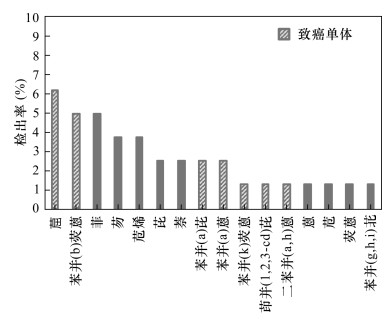
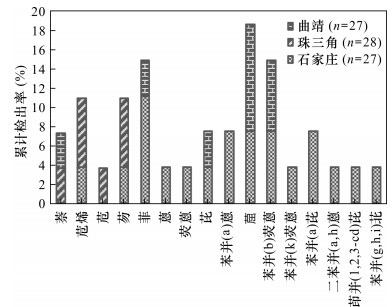
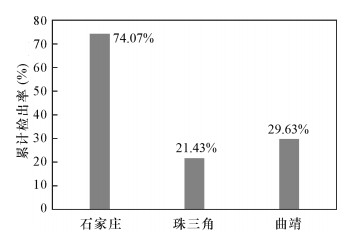
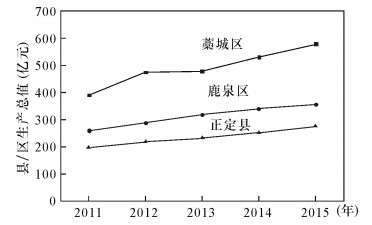
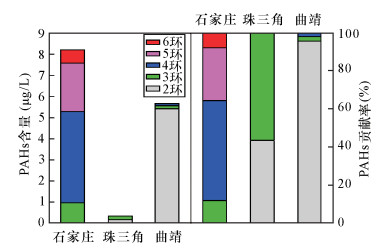
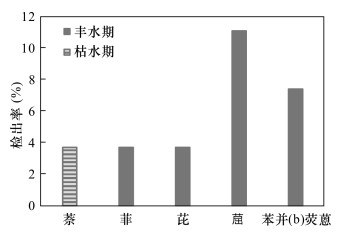
 京公网安备 11010202008159号
京公网安备 11010202008159号